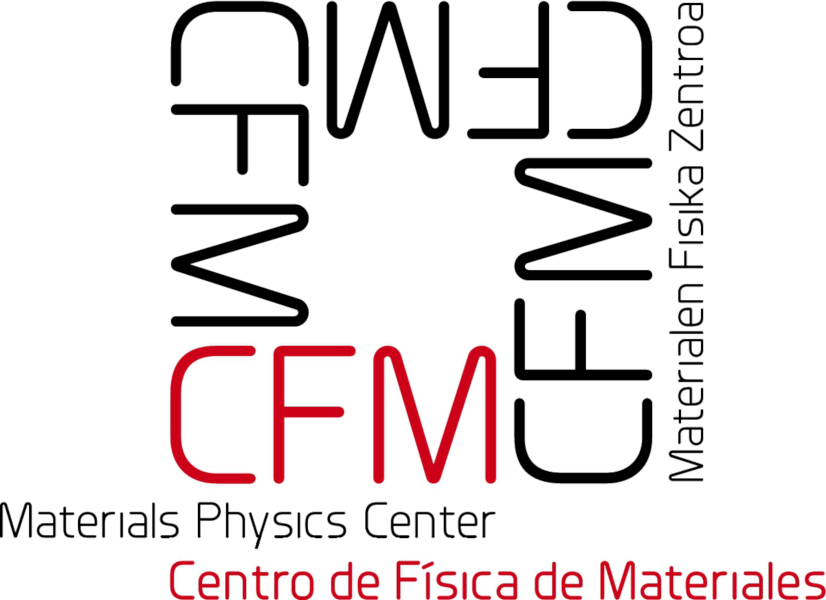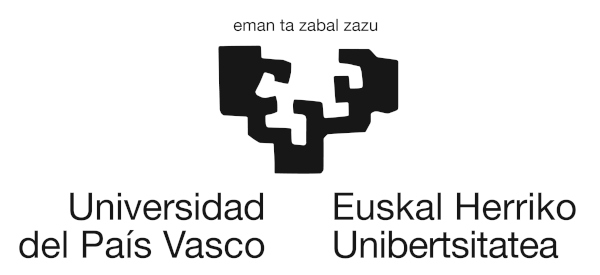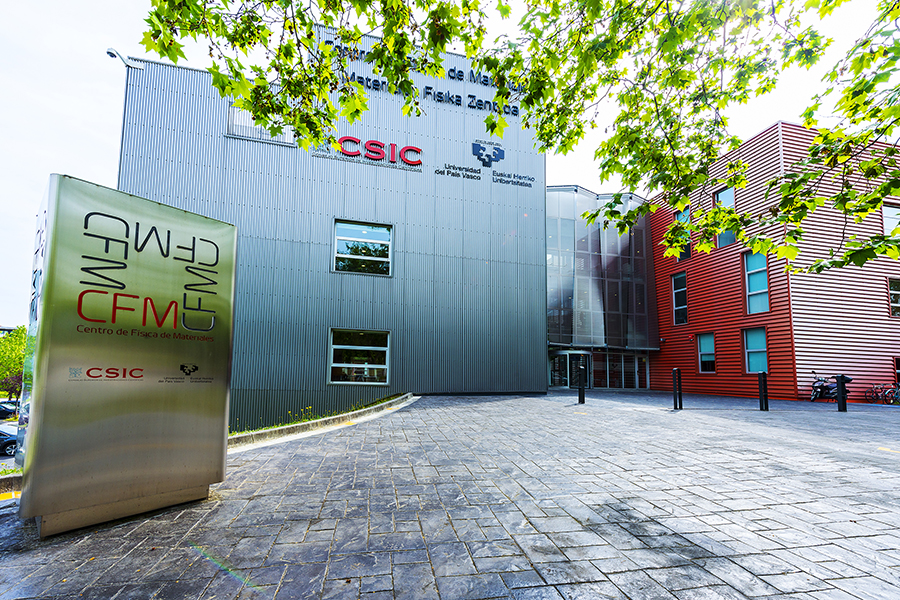The first “Summer School on the Calculation of Ionic Quantum and Anharmonic Effects with the Stochastic Self-Consistent Harmonic Approximation” will be held in Donostia/San Sebastián, Spain, from June 26-30, 2023. It will be a fantastic opportunity to learn the fundamental physics behind the SSCHA code and to get hands-on training sessions on its different utilities with lectures given by the developers of the code.
This will be your school if you want to learn how to calculate thermodynamic, vibrational, transport, spectroscopic, and superconducting properties in strongly anharmonic materials. The lectures and the hands-on sessions will focus first on the basics of the SSCHA and first simple calculations. More advanced lectures on phase transitions, spectroscopic properties, thermal conductivity, and electron-phonon interactions will follow later. In the hands-on sessions the student will learn to calculate the critical temperature of charge-density wave transitions, Raman and Infrared spectra of strongly anharmonic systems, the thermal conductivity at different levels of theory, and the superconducting properties of materials even if the harmonic approximation collapses.
Students are expected to bring their own laptop for the hands-on sessions. No prior knowledge on the SSCHA is needed for participating in the school, but it is advised to have some knowledge on the theory of phonons as well as some experience in computer simulations with ab initio methods or force fields.
We wait for you in the beautiful city of San Sebastian this summer.
In this website you can find the following information:
- Lecturers
- Hands-On sessions
- Program
- Registration and abstract submission
- Venue and travel information
- Organizers and contact
Institutional sponsors:
Lecturers
 Raffaello Bianco - University of Modena, Italy
Raffaello Bianco - University of Modena, Italy
 Giovanni Marini - Istituto Italiano di Tecnologia, Italy
Giovanni Marini - Istituto Italiano di Tecnologia, Italy
 Ion Errea - University of the Basque Country, Spain
Ion Errea - University of the Basque Country, Spain
 Francesco Mauri - La Sapienza University, Italy
Francesco Mauri - La Sapienza University, Italy
 Antonio Siciliano - La Sapienza University, Italy
Antonio Siciliano - La Sapienza University, Italy
 Lorenzo Monacelli - EPFL, Switzerland
Lorenzo Monacelli - EPFL, Switzerland
 Đorđe Dangić - University of the Basque Country, Spain
Đorđe Dangić - University of the Basque Country, Spain
 Diego Martínez Gutiérrez - Centro de Física de Materiales, Spain
Diego Martínez Gutiérrez - Centro de Física de Materiales, Spain
 Guglielmo Marchese - La Sapienza University, Italy
Guglielmo Marchese - La Sapienza University, Italy
Hands-On sessions
The tutorials for the Hands-On session can be downloaded from here.
Program
| Monday, June 26 |
Tuesday, June 27 |
Wednesday, June 28 |
Thursday, June 29 |
Friday, June 30 |
|
|---|---|---|---|---|---|
| 8:30-9:00 | Registration | ||||
| 9:00-10:30 | Lecture1: Francesco Mauri Theory of lattice vibrations and anharmonicity Slides Video |
Lecture3: Raffaello Bianco Second-order phase transitions in the SSCHA Slides Video |
Hands-on-session4: Raffaello Bianco Calculation of spectral functions with the SSCHA Video |
Lecture6: Giovanni Marini Theory of the electron-phonon interaction and superconductivity Slides Video |
Lecture8: Đorđe Dangić Thermal conductivity in strongly anharmonic crystals Slides Video |
| 10:30-11:00 | Coffee Break | Coffee Break | Coffee Break | Coffee Break | Coffee Break |
| 11:00-12:30 | Lecture2: Ion Errea Non-perturbative anharmonicity and the SSCHA Slides Video |
Hands-on-session3: Diego Martinez Calculations of second-order phase transitions with the SSCHA Video |
Lecture5: Antonio Siciliano Raman and Infrared spectra of strongly anharmonic materials Slides Video |
Hands-on-session7: Ion Errea Calculation of the electron-phonon interaction and superconducting properties with the SSCHA Video |
Hands-on-session9: Đorđe Dangić Thermal conductivity calculations with the SSCHA Video |
| 12:30-14:30 | Lunch Break | Lunch Break | Lunch Break | Lunch Break | End of School |
| 14:30-16:00 | Hands-on-session1: Diego Martinez First SSCHA simulations: free energy and structural relaxations Video |
Lecture4: Raffaello Bianco Spectral functions and spectroscopic properties Slides Video |
Hands-on-session5: Lorenzo Monacelli Raman and Infrared spectra with the SSCHA Video |
Hands-on-session8: Giovanni Marini and Guglielmo Marchese Calculation of the electron-phonon interaction with the SSCHA and Wannier functions: the EPIQ code Video |
|
| 16:00-16:30 | Coffee Break | Coffee Break | Coffee Break | Coffee Break | |
| 16:30-18:00 | Hands-on-session2: Lorenzo Monacelli Setting up automatic SSCHA simulations on clusters Video |
Oral Contributed Talks1 16:30-16:42 Davide Romanin 16:42-16:54 Nina Girotto 16:54-17:06 Virginie de Mestral 17:06-17:18 Daniil Poletaev 17:18-17:30 Nityasagar Jena 17:30-17:42 Tomas Northam 17:42-17:54 Stefano Paolo Villani |
Hands-on-session6: Đorđe Dangić The SSCHA with machine learning potentials Video |
16:30-17:15 Lecture7: Lorenzo Monacelli Strengths and limitations of the SSCHA: how does it compare with other approaches? Slides Video Oral Contributed Talks2 17:15-17:27 Hussien H. Osman 17:27-17:39 Alfredo Fiorentino 17:39-17:51 Jose Angel Silva Guillén |
|
| 20:30-23:30 | Conference Dinner |
Registration and abstract submission
Registration is now open. Deadline is June 18, 2023. Regular Registration Fee: 150€
The registration fee includes all the school material, lectures, hands-on sessions, coffee breaks, and conference dinner. There is a limited number of students that can be accepted. Students will be accepted on a first come, first served basis. So register as soon as possible.
Registration to the conference is done through UIK’s platform:
If you are already user of such platform, log in with your mail and password. Otherwise, register first to be a user. Find detailed instructions for registration and access to your personal area on UIK’s platform here. You will find useful information with screenshots to lead you through the registration process. Once registered you will have access to your personal area where you can find your invoice and attendance certificate.
Points to consider in the registration process:
- It is important to write your affiliation. Even though the field is not compulsory, it will be needed for your badge.
- Click on the dinner option if you are going to attend. Although it is included in your fee, it is important to click, otherwise we will think you are not coming. Write your food restrictions, if any, in the space provided once you click.
- You can either pay by credit card or bank transfer:
- Credit card: you will be able to finish your registration straight away.
- Bank transfer: You will have to upload a proof of payment on step 5. Your registration will be validated later on.
- We have arranged some low-budget accommodation possibilities in shared rooms for some students that can be accessed in the registration process. Other possibilities need to be arranged by the students themselves. See here for suggestions.
- If your fee is to be paid by your institution, have in mind that you will have to change the billing address on step 4 by clicking on the tab “Add a new address”, and write your institution’s billing address. Many institutions ask for a pro forma invoice to be able to make the payment. You can also get it on step 4 but remember to change the billing address first.
Abstract submission:
The registered students will have the option to send an abstract to the school. Some of the contributions will be selected for a contributed talk and the rest will be presented in a poster session. The contributions we expect are related to systems where phonons play a crucial and anharmonicity may be important.
The asbtracts can be submitted following this link:
https://forms.gle/TjCes3fuZsY9T7nW6
Important points about the abstrac submission:
- Deadline for the abstract submission has been extended. New deadline is May 15, 2023.
- Only abstracts of registered students will be considered.
Venue and travel information
The school will take place at the Centro de Física de Materiales located in the campus of the University of the Basque Country in San Sebastian, Spain. The exact address is Manuel de Lardizabal Pasealekua 5, 20018 San Sebastian, Spain.
How to reach San Sebastian:
By plane:
- Bilbao airport, Spain (IATA: BIO, 100 km. from the city center): About 1 hour drive from San Sebastian. An international airport with connections to all major cities in Europe (London, Paris, Frankfurt, Brussels, Rome,…). The most convenient one for overseas travellers in terms of connections and air fares. A direct shuttle bus running every hour connects the airport with San Sebastián for about 17 euros. The bus time table is available at Lurraldebus (search between “AEROPUERTO BILBAO” and “DONOSTIA/SAN SEBASTIAN”).
- San Sebastian airport, Spain (IATA: EAS, 25 km. from the city center). Next to the town of Hondarribia, about 30 minutes drive from San Sebastian. A small airport with domestic connections to Madrid and Barcelona. Iberia flies to this airport. Convenient when a connection through Madrid is possible. A taxi connecting the airport and the city should be around 30 euros. The airport is also connected to the city center with lines E20 and E21 operated by Lurraldebus.
- Biarritz airport, France (IATA: BIQ, 50 km. from the city center). 40 minutes drive from San Sebastian. Air France flies to this airport, and some low-cost airlines such as Ryanair also fly here. Convenient when flying from France or London. Public transportation is complicated between Biarritz and San Sebastian.
By train:
- The Adif train station Estación del Norte is in the center of San Sebastian, close to Urumea river. It offers connections to several Spanish cities, including Madrid and Barcelona.
- There is also Metro Donostialdea, popularly known as Topo, a narrow-gauge train connecting Donostia with cities along the Basque Coast, from Bilbao and Hendaye (France).
By bus:
- The San Sebastian bus station, which is located by the Adif train station, has lines to cities troughout Spain. The main company traveling here is Alsa.
By car:
- The city is connected to the rest of Spain by the N-1 (Madrid-Irun highway), AP-8 (Bilbao-Irun highway), and A-15 (Pamplona-San Sebastián highway).
Accommodation:
The registration fee does not include accommodation and participants should make their own bookings separately. Please find here a list of recommended hotels. Note that in the registration process you will also have the option to choose low-budget options in Livensa and in Villa Alaidi student houses.
Student houses near the conference venue:
Hotels near the conference venue:
- Hotel NH Collection San Sebastian Aranzazu
- Hotel San Sebastián
- Codina Sercotel Hotel
- Hotel Antik
- Hotel Avenida
- Barceló Costa Vasca
Hostels near the conference venue:
Other options:
- San Sebastian offers a great variety of different kinds of accommodation, ranging from 5-star hotels to hostels and flats. In order to make it easier for you to find the accommodation that better suits you, we suggest to have a look at the following link San Sebastian Tourist Office.
Organizers and contact
The organizers of the school are:
- Ion Errea - University of the Basque Country, Spain
- Lorenzo Monacelli - EPFL, Switzerland
- Diego Martínez Gutiérrez - Centro de Física de Materiales, Spain
- Raffaello Bianco - Università degli studi di Modena e Reggio Emilia, Italy
You may contact us at this email address: codesscha@gmail.com




